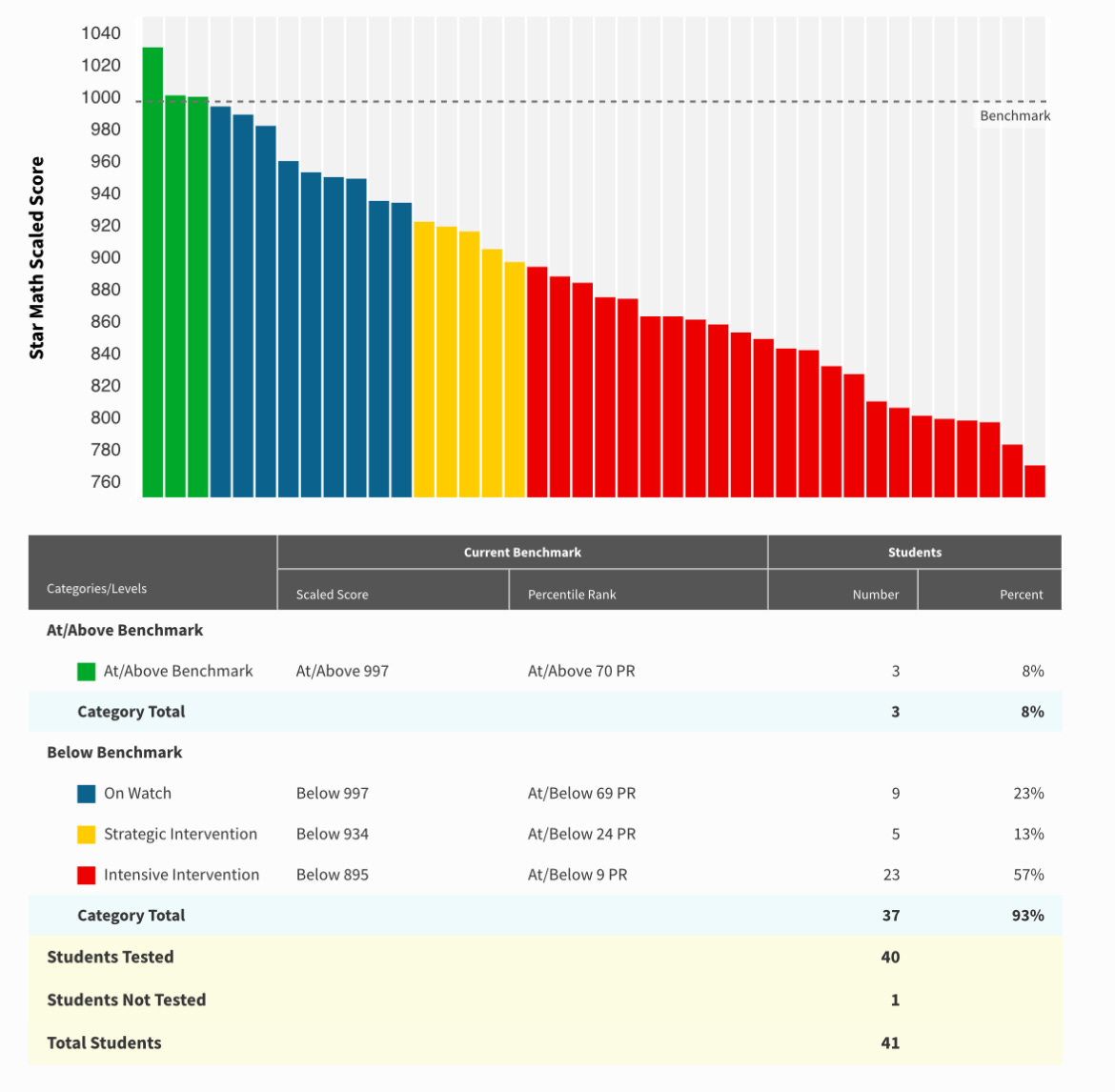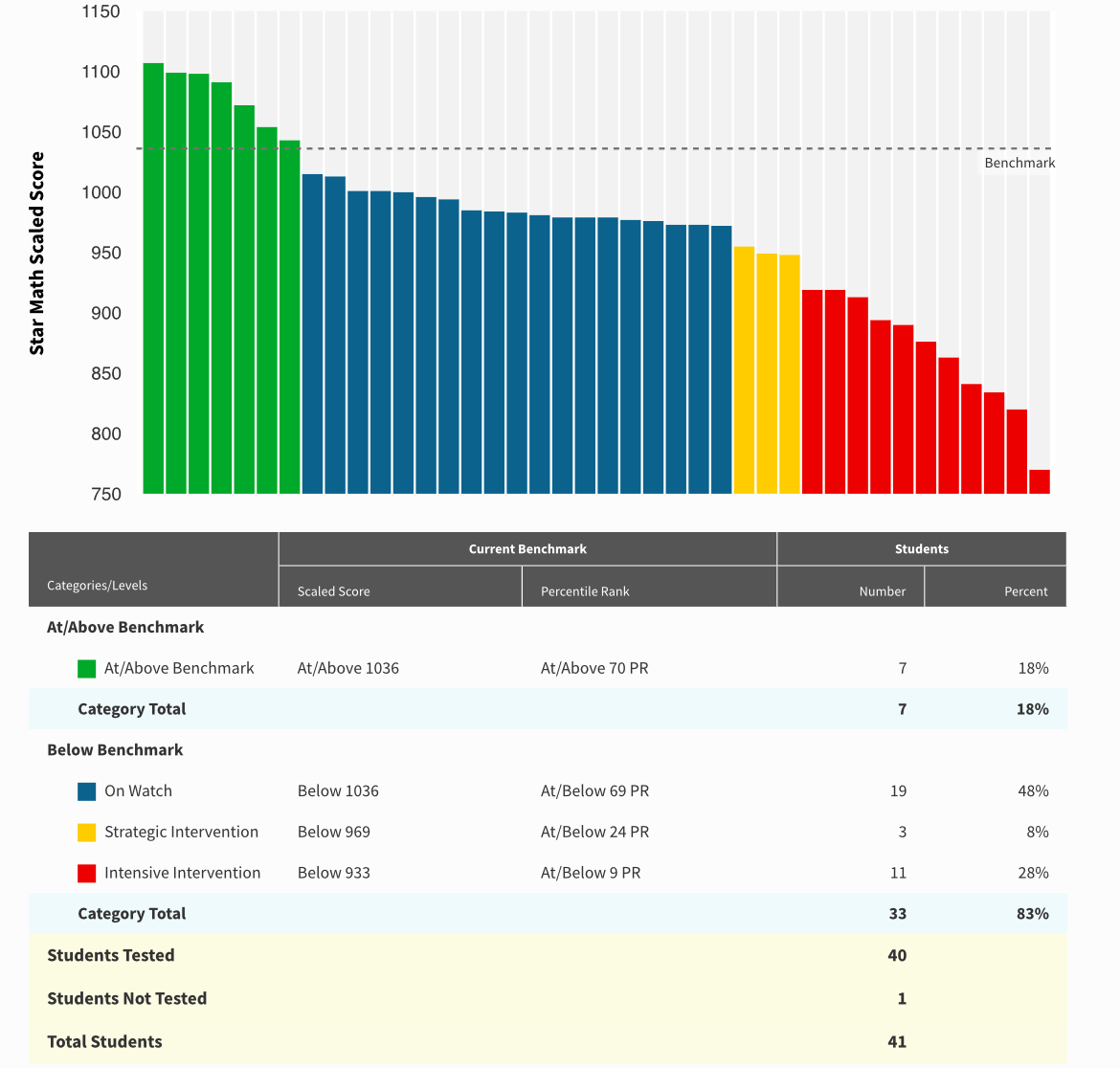
My name is Takia, and I’m a 5th-grade math and science teacher.
I am new-ish to the teaching profession but “old school” in practice, relying heavily on explicit/direct instruction. I love reading and exploring ideas on best practices in math instruction.
I am dedicated to making math more fun and accessible to students in underperforming and underprivileged schools.
In this post, I’ll be sharing my reflections and my plans for the upcoming year.
Data
This year, I’ll be looping with my students from 4th grade to 5th grade. When I started with this cohort in Fall 2023, most of my students had severe gaps in their mathematical understanding and abilities:
57% of students tested in the Intensive Intervention range on district benchmarks (indicating they were about 2-3 grades behind in math),
13% - Strategic Intervention
27% - On Watch
8% - At/Above benchmark (indicating proficiency at grade level math)
Although most of my students were 2 or 3 grade levels behind in math, I set an ambitious goal to have 30% of students At/Above district benchmarks by the end of the school year.
Spoiler alert: We didn’t reach 30%, but the students worked hard, and there were some significant achievements:
Reduced the number of students in Intensive Intervention from 57% to 28%
Increased the number of students who were ‘On Watch’ from 27% to 47%
Moved from 8% At/Above Benchmark to 18% At/Above Benchmark
Reflections
Ultimately, I am proud that my students made so much growth. Students who had very little computation skills and no conceptual understanding were performing lightyears ahead of where they began. However, I was disappointed that I was unable to move more students from “On Watch” to reaching proficiency by the end of the academic year.
After months of reflection, I recognized there were many factors beyond my control, such as chronic absenteeism and low reading proficiency.
However, other variables were within my control, like providing better interventions to address specific gaps in understanding (like data and measurement) and being more consistent in my instructional practices and routines.
As I plan for the 2024-2025 academic school year, it’s important to acknowledge what went well last year and what I could have done better to avoid making those same mistakes again:
What Went Well
Explicit Instruction: Our district recently adopted an inquiry-based problem-solving curriculum. Many of our students are struggling readers, and the problems can be time-consuming and promote unproductive struggle. I strike a balance between explicitly teaching concepts and working through problems before releasing students to work in groups or independently. This practice made math more accessible for students who were 2-3 grade levels behind.
Whole Group Intervention: Taking time to review gaps in prior learning before introducing new content proved to be very impactful for my students. Using the Achieve the Core Coherence Map to create Mini-Lessons will be a practice that I continue moving into this school year.
Math Fact Fluency Practice: Students started the year by relying on skip counting, drawing visual representations, and using number lines to solve simple problems like 8-2=6 or 3x4=12. Those strategies are not efficient in a 4th-grade classroom. Throughout the year, we worked on improving the automaticity of math facts to make working with larger numbers easier.
Spiral Review: Before the start of every lesson, we completed a low-stakes 'Do Now' to improve computational skills. It was refreshing to see students who struggled with addition and subtraction in September master those skills and advance to completing long-division problems by spring.
Needs Improvement
Consistency: I find myself getting bored easily and have to remind myself that as the adult in the room, just because I get bored with it, doesn’t mean that my students do too. This year, I need to stick to my routines, follow my schedule, and better manage my pacing/time management.
Curriculum-Based Measurements (CBMs): CBMs in math are not required beyond third grade, but they are very helpful for measuring fact fluency for all students. They will become routine in my classroom so that I have the most up-to-date data on student fact fluency. This data will allow me to make better decisions for fluency interventions.
Small Group Instruction / Intervention: I need to create a better system for small group instruction that allows me to work with the same students at least 3-4 times a week.
Practice: Students could use more time with practice problems. Our curriculum does not provide many, so I have to supplement it with resources from Khan Academy and Eureka.
Goals for 2024-2025
While 100% proficiency is the ultimate goal, I recognize there’s only so much growth that can be achieved in one school year. However, based on our progress from last year, a goal of 50% of students reaching At/Above benchmark shouldn’t be too far out of reach if students continue progressing at the levels they did last school year.
If you’re interested in following our journey to increase math proficiency, subscribe to my newsletter for weekly updates, resources, and more.
Thanks for reading,
Takia


